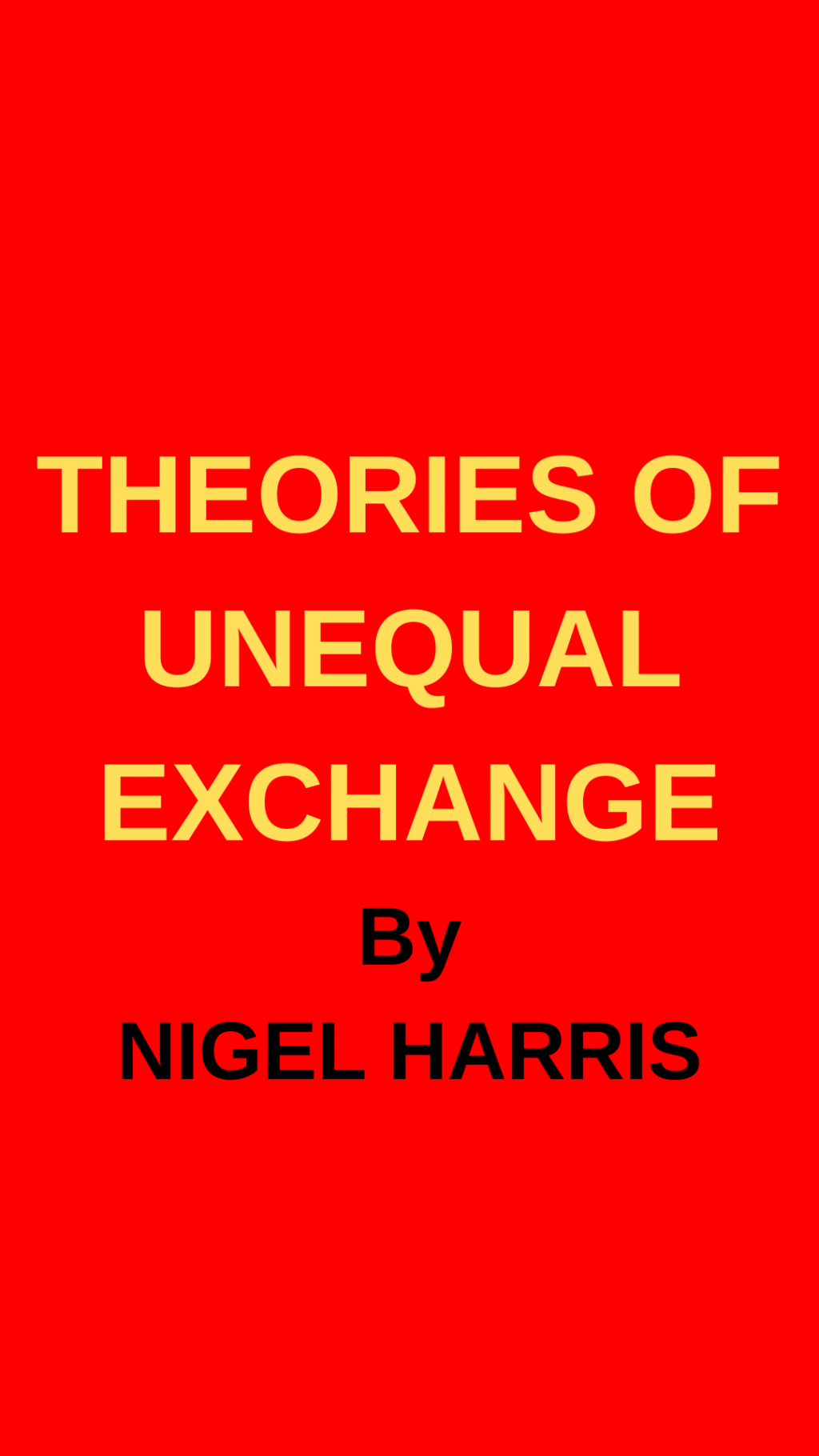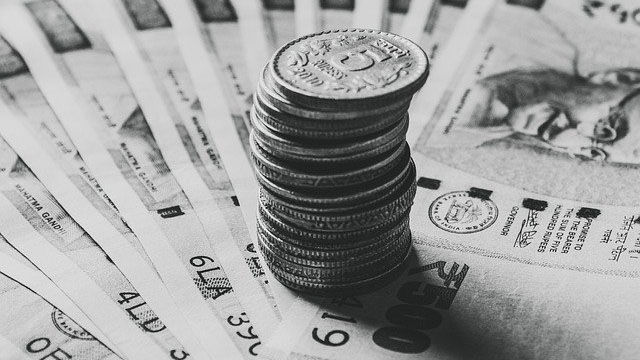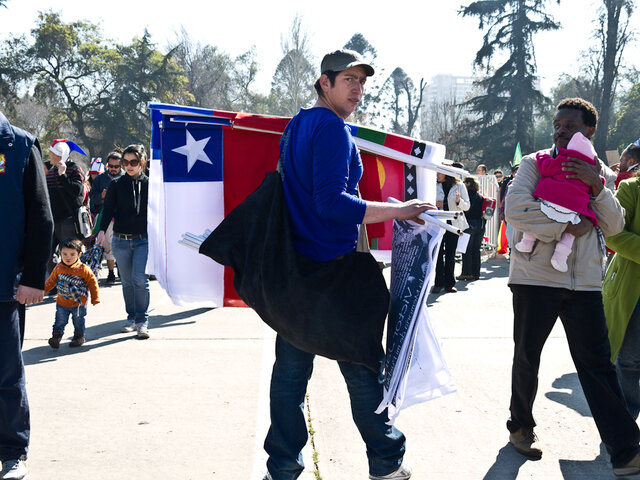
[ From the pages of history, This article was originally published in Society and Change, Vol IV, Number 4, July-September 1985]
There are a number of variations on the theme that, in conditions of free trade between different geographical areas (two countries, two groups of countries, or town and country), there is a systematic bias so that the economically more advanced gain disproportionately or exclusively relative to the more backward partner. In Marx’s scornful reproach of the classical economists in 1848:
If the free traders cannot understand how one nation can grow rich at the expense of another, we need not wonder, since the same gentlemen also refuse to understand how, within one country, one class can enrich itself at the expense of another.
The idea that the more advanced invariably exploit the more backward is a very ancient idea, and a powerful thread in the earliest mercantile school of economic thought. Thus, in the late sixteenth century, one of the mercantilist thinkers of more backward England reflected on the export of English raw wool to, and the import of finished woolen goods from, more advanced Europe—
What grossness be we of, that see it and suffer such continual spoil to be made of our goods and treasure… “They must make us pay at the end for our stuff again… whereas with working the same within our Realm, our own men should be set on work at the charge of the strangers.”
In essence, it was thought, international trade was a mechanism for pumping money out of England into the hands of foreigners. The case was the first justification for using the State to limit imports in order to force the pace of growth of domestic manufacturing: what in the twentieth century became known as ‘import substitution industrialization.’ Of course, in terms of the pure theory of capitalism, such an approach was absurd—the capitalist is or ought to be concerned with the profit rate whatever the phase of production concerned, and it might well be that the rate of return on the sale of raw wool is higher than that on the manufacture of woolen goods. Where the mercantilist case makes sense is not in the abstractions of world capital, but in the struggle of a more backward national capitalist class to close the gap with the more advanced.
The case thus emerges as part and parcel of the development of national capitalism in contest with more advanced national capitalisms. Many regimes in the eighteen and nineteenth centuries experimented with import controls to force domestic capital accumulation. They did so without much theorization, let alone a theory of unequal exchange. However, there were two now much neglected theorists—Alexander Hamilton (in the backward United States) and Friedrich List (in the backward States of Germany). There was also theorization in the backward States of Eastern Europe in the interwar period, part of a nationalist corporatist case of the grain exporters against the economic domination of Germany. The Roumainian economist, Mihail Manoflesco described free trade and the international division of labour as an intellectual swindle to conceal how the rich countries robbed the poor:
Just as Marx’s theory leads us to understand the social phenomena of the capitalist world and especially that of exploitation by classes, this theory of international exchange makes us understand the inequality between peoples and relations of exploiter and exploited that connect them.
There was a different thread of speculation about cities. Marx and Engels in their account of primitive accumulation show how cities—or towns—drain resources out of the countryside. Indeed, Marx places heavy stress on the economic relations between urban and rural—
The foundation of every division of labour that is well developed and brought about by the exchange of commodities is the demarcation between town and country. It may be said that the whole economic history of society is summed up in the movement of this antithesis.
Or again:
The greatest division of material and mental labour is the separation of town and country. The antagonism of town and country begins with the transition from barbarism to civilisation, from tribe to State, from locality to nation, and runs through the whole history of civilisation to the present day.
By what means did the urban take resources from the rural? Through direct appropriation—the King or State taxed the peasantry, and often obliged it to perform unpaid services, service in the armed forces etc. Rural migrants swelled the urban labour force without the towns being responsible for meeting the costs of these workers (a continuous net transfer of resources from one to the other). And in the market, the few urban buyers of agricultural output could force down the prices before the many competitive sellers of produce; the few urban sellers of urban manufactured goods could hold the prices high (not invariably, mind you). Similar mechanisms operated in the European empires between the colonies and the metropolitan power. The British, to the very end, had an item in their accounts with India called “Treasure.” Note that the transfers did not arise from the free operation of the market, a most rare phenomenon in the reality of capitalism, but from monopoly manipulation of the market, the use of pure power outside the market and from straight robbery.
In Soviet Russia, Preobrazhensky, the leading economic thinker of the Left Opposition in the twenties, turned this account of the economic history of capitalism into a strategy for the development of Russia. He argued, with foolhardy bravery given the emerging power of Stalin, that the rural areas of Russia should be treated, within certain limits, as colonies of the urban industrial centres, the private peasantry as colonized labour of the State sector. By manipulating prices—using the State’s monopoly of the supply of manufactured goods, and its dominant position as buyer of agricultural produce—accumulation in the hands of the State industrial sector could be accelerated. Again, it should be noted, this is not “unequal exchange” in a free market, but the deliberate use of monopoly power to force a redistribution of the surplus in favour of one of the trading partners. Subsequently, Stalin appeared to copy the Preobrazhensky case in a much more ruthless form, including the barbarism of collectivization, but in fact the Stalinist regime appears to have relied for accumulation on the exploitation of urban labour first and foremost rather than ransacking agriculture (although the disastrous effects of collectivization continued for many years, this was not matched by a substantial transfer of resources from rural to urban).
Speculation concerning the trade relationships between urban and rural, between producers of manufactured and of agricultural goods, within one country was inevitably paralleled by theories concerning relationships between exporters of manufactured and of agricultural goods in different countries. At the same time as Manoflesco was formulating his case, a not dissimilar one was being developed in another country that was a major exporter of agricultural produce, Argentina. Raul Prebisch, doyen of what later became development economics (as well as inspiration of the Economic Commission for Latin America, CEPAL, and later first chief of the United Nations Conference on Trade and Development, UNCTAD), began with two problems: a) between 1929 and 1931, the period of the Great Depression in the world system, the prices of Latin American exports declined disastrously, resulting in a 60 per cent fall in the region’s export earnings; yet, simultaneously, the prices of Latin America’s manufactured imports did not fall: the squeeze was devastating. b) in the late forties, it seemed on the basis of various studies that raw material prices in world trade were tending to decline in the long term when compared to the prices of manufactured goods. Latin American exporters would therefore have to increase the volume of their raw material exports continually in order to earn the same revenue and thus be in a position to purchase the same quantity of manufactured imports.
Prebisch offered different kinds of explanation for these phenomena, of which two were most influential. His first account turned upon the replacement of Britain by the United States as dominant power in the world economy. In the nineteenth century, he argued, because of its size, Britain had imported most of its raw materials and exported capital to those areas of the world that produced raw materials; thus as the British economy grew, it simultaneously stimulated the growth of its trade partners—each end of the trade relationship grew in step with the other. However, the United States was a continental economy, rich in its own raw material resources and thus with a low propensity to import. As the United States economy grew, its imports did not (at that time) expand on the same scale, and profitable opportunities with the United States tended to restrict the export of capital. Thus, the replacement of Britain by the United States introduced a severely negative force in the world system, reflected in the long-term deterioration in the terms of trade between manufactured and agricultural exporters which was in turn demonstrated in the drain of gold out of the rest of the world and into Fort Knox. The same case, incidentally emerged in Europe in the late forties to explain what was seen as the permanent disequilibrium between the North American and European economies.
This first case was an historically contingent one: it turned on the accidental characteristics of Britain and the United States. The second form of explanation was much more general. The price of manufactured exports did not decline in a world slump, Prebisch proposed, because the industrialized countries were able to hold them up, whereas the more backward countries could not sustain the prices of their raw material exports since there were many of them competing. Because of this powerful monopoly element, the benefits of technical progress which ought to have lowered the prices of manufactured exports did not do so; all the gains accrued to the sellers, none to the buyers (obversely, all the benefits of technical progress in the production of raw materials accrued to the buyers, not to the sellers). Thus, again, the monopoly position on one side of the trade relationship produced an unequal exchange.
Historically, the idea of a monopoly by the governments of the industrialized countries (the ‘Centre’ or ‘Centres’ as Prebisch now called them, merging the vital distinction between capital and the States) over the supply of manufactured goods to the Less Developed (or ‘periphery’) never seemed very plausible. Perhaps this was a reason for the radical revision of the case that came later: the prices of manufactured exports stayed high, it was now said, because the trade unions in Europe and North America were able to prevent wages and employment falling in a slump. Thus, the monopoly element was not a control of the supply of goods, but control of the supply of labour to produce the goods. The terms of trade were now determined by the class struggle. The weak or non-existent trade unions in the periphery, impotent to control a vast supply of low waged workers, could not hold the price of labour time in a slump. In sum, the gain to labour in the industrial countries was the direct loss of labour in the backward countries.
There were other explanations of unequal exchanges. Incomes were low in the backward countries, the market correspondingly small, so no economies of scale in production were possible and manufactured output could not compete with the Centres. Hans Singer proposed that the long-term deterioration in the terms of trade occurred because of “Engels Law,” the proposition that raw material inputs to production declined as manufacturing output expanded (because of economies in the production process). Arthur Lewis argued that the wages in backward countries were determined by a low level of subsistence costs there, so that workers in exporting sectors were, by world standards, underpaid; this artificially low price of labour produce surpluses that were transferred through foreign trade or profits to high wage countries where the foreign owners of the enterprises lived.
All these cases were advanced by political reformists (as was Prebisch). The critique did not necessarily add up to a demand for radical political change. Prebisch’s case supported an argument that the Latin American countries should seek to break out of their role in a specialized international division of labour by industrializing. Thus, they would claw back the benefits currently accruing to the Centres, equalizing trade relationships. To protect themselves against competition from the much more advanced manufacturing of the industrialized countries, the State should control imports and support industrialization programmes. Later when the benefits of these changes seemed to have been exhausted, he argued for larger markets so that more elaborate economies of scale became possible (the background to the proposal for a Latin American Free Trade Area and other regional trading pacts), and for a direct assault upon the unfavourable conditions of international trade (through UNCTAD).
There was a different school of thinkers, the revolutionary nationalists, who took off from where Prebisch stopped, and expressed their case in Marxist terminology—for example, Paul Baran, Samir Amin, A. Emmanuel, and Andre Gunder Frank.
The most clearly elaborated case was that presented by Emmanuel. The problem, he said, lay not with different types of commodities (raw materials or manufactured goods) but different classes of economy (backward and advanced); even if the advanced exported raw materials and the backward manufactured goods, the price differences would stay the same, for the problem was a function of the distribution of wealth and power, not of type of goods.
Emmanuel took his starting point in the work of Ricardo, a classical economist writing immediately prior to Marx. Ricardo assumed capital and labour was immobile between countries, so that the means to equalize prices in the system could be achieved not by moving capital or labour between countries, but by moving goods, international trade. Now the third factor of production, land, was even more immobile than the other two, and this allowed the landowners to divert a disproportionate share of the national surplus away from the other two factors. The landowners used the State to prevent imports, so keeping high the prices of domestic agricultural produce: the most immobile factor was thus able to operate a quasi-monopoly.
From the third quarter of the nineteenth century, Emmanuel says, capital became increasingly mobile, while land became a very marginal element in the composition of productive factors. Immobile labour, however, increasingly constituted itself, as land had been, as a monopoly, control of the supply of workers allowed trade unions to determine wages and employment, to squeeze capital. By contrast, in the backward countries, labour remained disorganized and weak. There was thus a fundamental assymetry in the system—in one area, high wages and low profits; in the other, low wages and high profits, with international companies establishing a world profit rate between them. At the end, a few hours of labour in an industrialized country were rewarded with an income, says Emmanuel, thirty times as great as the reward to many hours of labour in a backward country. If living labour of the same skill was of equal value everywhere—as it ought to be under the labour theory of value—and labour was the sole source of value in goods produced, then the trade relationship between backward and advanced countries was a clear case of unequal exchange. That relationship, for Emmanuel, constituted the exploitation of the first by the second, the expropriation of the surplus value created by the proletariat of the backward countries by the workers of the advanced.
The case presented by Emmanuel was fascinating, worked out in great detail in its theoretical presentation but with surprisingly little empirical material. It was very influential, offering a theoretical rationale to the gut feeling of many Third World left-wing intellectuals seeing the contrast between the standard of living of workers in the industrialized countries and the horrifying poverty in the backward. The fascination of the case lay in showing how easy it is to slide from the defence of the interests of the world working class to the defence of the interests of the ruling classes of the Third World, all without changing the Marxist language.
The critical observations on the theories of unequal exchange fall into two groups—contingent factors and theoretical observations.
Contingent factors. In practice, there was no long-term deterioration in the terms of trade between backward and advanced, raw materials and manufactured goods. Deterioration there was in the bundle of goods exported in 1870 (both raw materials and manufactured goods) compared to the present, but the composition of the bundle had changed radically. There were considerable fluctuations, but not a trend—as the rapid rise and later decline in the real price of one raw material, oil, has shown. Furthermore, by today, the industrial countries export more raw materials than the Less Developed; and over half the exports of the Less Developed are manufactured goods. The old Prebisch diagnosis has disappeared.
Emmanuel does not distinguish between the mobility of financial capital and the relative immobility of productive capital. Today, there is almost “perfect capital mobility” internationally among the industrialized countries, but factories can only with some difficulty be shipped round the globe. The distinction is important in understanding the different relationships of capital to the State, and so the plausibility of seeing a single entity, the Centre, where the interests of capital and the State are the same. If capital is more mobile, the immobility of labour is of declining importance—and in any case, labour is increasingly mobile (although on nothing like the scale of capital).
If, as Emmanuel suggests, the heart of unequal exchange arises from an immobile factor squeezing a mobile one, how is it that Emmanuel does not notice a more powerful immobile factor than labour, the State (a point made by Michael Kidron). We would expect taxes to be more important than wages on this score.
It is also strange that capital does not as a whole go to the backward countries if that is where the profits are highest. That this has not happened suggests either that capital is not as mobile as Emmanuel thinks (it is required to remain in situ in the industries) or that business does not pursue profit maximization. In practice, the evidence suggests today that neither labour nor the State can prevent the mobility of finance capital, so that it is not at all clear why capital does not move. A second perverse outcome of the Emmanuel model is that unequal exchange can be presumably reversed if the State in the backward countries raises wages to the level of the advanced countries—the inequality is rectified immediately.
History has partly overtaken the case also, for Emmanuel does not explain how Japan and the Newly Industrializing Countries were able to beat the trend and move from raw materials to manufactured exports. Furthermore, with declining real wages and over thirty million unemployed in the industrialized countries, the case for the trade unions holding a monopoly of the supply of labour looks as silly as it ought always to have looked outside the editorial columns of the Daily Telegraph.
Theoretical points. Emmanuel claimed to be a Marxist (Prebisch did not, even though the two cases have similarities), yet unlike Marx, he identifies trade, the sphere of circulation, as the mechanism of exploitation, not the relations of production. In Marx, the theory of value is not a function of the market but of the distribution of socially necessary labour time between branches of production and the requirements for the reproduction of the system.
Furthermore, in Emmanuel, wages are a freely self-determining element in the system, capable of overcoming market determination and defeating the theory of value (for according to Emmanuel, wages in the industrial countries are far in excess of the socially necessary labour time required to reproduce the worker). In Marx, there are no independent variables—all are determined by, and in turn shape, the relations of production and the productive forces. Wages are among the most constrained elements in the system precisely because of their relationship to the generation of surplus value. For Emmanuel, not only can workers determine their own wages, that determines prices; all other factors of production are omitted. This feature prevents Emmanuel seeing that the difference between advanced and backward countries is not in the politics of monopoly, but the scale of productive forces, the radically different organic compositions of capital, producing enormous differences in the productivity of labour (and so the price of goods). The problem of economic backwardness is not simply one of oppression by the dominant States, but of brute material scarcity, itself the product of different processes of accumulation not of simply exchange relationships.
There is an interesting cluster of issues here. For Emmanuel speaks of the industrialized countries “exploiting” the backward as if this were the same as the exploitation of labour by capital. Capital and labour form a single production system, but it is quite unclear what single production (as opposed to trading) system two territorial areas could constitute. There are many forms by which resources can be appropriated by the more powerful, but they do not constitute exploitation in the Marxist sense—although, in so far as they imply unreasonable treatment, they may constitute exploitation in the popular sense. It is very difficult to see what the argument is if we take one whole country as capital, and one as labour—and transfers of wealth between them (even, as Marx describes it in the earlier citation, growing rich as the expense of another) do not show exploitation in the Marxist sense. Of course, the blurring of the distinction is very common; consider the speech of an Italian delegate, Graziadei, at the Second Congress of the Comintern:
Comrade Lenin poses the question in the following way: just as in every nation there are exploiters and exploited, so too in international relations there are nations that are exploited by other nations.
This is only a step away from the purely nationalist division of the world into “proletarian” and “bourgeois nations,” the spirit of which would have been entirely comprehensible to Manoflesco, but not to Marx. But one would not expect a scientific work by an author so steeped in Marx to perpetuate the muddle, a particularly significant one for the division between Marxism and nationalism.
Furthermore, even if we could say in a rigorous sense that the rich countries exploit the poor, this would still not constitute robbery or a relationship without net advantage to the exploited. The collapse of Marxist categories into populist nationalism produces the elimination of the contradictory nature of reality. Marx is careful in his formulation of this:
the circumstances that on the hand, the daily subsistence of labour power costs only half a day’s work, while on the other hand, the very same labour power can work during a whole day…is, without doubt, a piece of good luck for the buyer, but by no means an injury to the seller.
In sum then, while dominant States do indeed use their dominant position to attempt to transfer resources to themselves, employing brute force, political power, elements of monopoly, against weaker States, it is a dangerous theoretical confusion to call this “exploitation” as if it were the same as the relationship of capital to labour. Emmanuel treats countries as homogenous social classes.
Emmanuel in similar fashion omits serious attention to differences in the productivity of labour, relating these both to the very great differences in the prior accumulation of capital and the socially necessary costs of the reproduction of labour. Other things being equal, the higher the productivity of labour, the higher the income paid to the worker (since his or her reproduction costs are higher) and the more exploited he or she is—that is, the greater the proportion of the worker’s output is appropriated by the employer. Kidron has convincingly demonstrated that, in the Marxist sense, British workers are more exploited than Indian. The lower the productivity of labour, the more miserable and impoverished the worker, and the less the possibility that he or she can be very exploited. It follows from this that it remains true that the heart of the world system for the generation of surplus value remains that part of the working class which is most productive, located in the industrialized countries.
For Emmanuel, it seems, the Western working class has abolished itself, and is no longer exploited, for it has joined the bourgeoisie (a popular middle class prejudice of the sixties in the First World, faithfully played back by the intellectuals of the Third World). It follows, although Emmanuel would not dare to voice such heresy, that the ruling classes of the Third World have joined the proletariat! Nations and classes merge, and the State becomes, as in Stalinism, the primary instrument of the class struggle alias the struggle to defend national independence.
The working class of the industrial countries, by becoming the bourgeoisie, come to exploit the masses of the backward countries. High wages in one area are possible only on the basis of low wages in the other. Underlying this idea is, it should be noted, the idea of a fixed wage fund; the real struggle is within the world working class; to appropriate the largest share of the fund. Indeed, capital begins to emerge as a neutral victim of this struggle, a picture much loved by Conservatives. Trade Unions may squabble, they say, but the total wage fund cannot be increased—only redistribution can take place from the weak to the strong. Thus, under the Marxist terminology is the old ruling class tactic of seeking to make workers see the class struggle as solely internal to the working class, robbing the poor.
The view has nothing to do with Marx. Indeed, Marx is turned on his head, for now the Western proletariat exploits the world. This is the authentic expression of the revolutionary nationalism of the rising bourgeoisie of the Third World, asserting the primacy of nationalist conflict between stronger and weaker ruling classes over world class struggle. It has the subsidiary purpose of providing a case to close the borders to imports, so that the State can exploit a monopoly position (whether in alliance with local private capital or not) to force the pace of primitive accumulation. Once accomplished, the rulers return to the world market, quite unblushing at all the old nationalist rhetoric.
Far from a theory of unequal exchange being necessary for any theory of imperialism, the reactionary substitution of countries (or rather, States) for classes destroys the theory of imperialism. For changes in the relationships between countries can accomplish the entire programme of social transformation. The heart of the theory of imperialism, the domination of the world system by a disproportionally powerful group of States, hitherto the homeland for the largest part of world capital, remains valid. But it does not mean static relationships between the geographical parts of the system, nor that all manufacturing will remain in the industrial countries (a point noted long ago by Lenin, following M. N. Roy). The world is divided still into spheres of influence of major powers, but it is not divided by different blocs of national capital. It is an over-politicized view to see no more than national entities, a view appropriate to Third World nationalism, but one which omits the dynamic force in the system, the world market. The imperialism of the 1980s is very different from that of the nineteenth century.
Notes and References
- This is the text of a talk given at Marxism 85. London, July 1985.
- William Stafford (John Hales), A Compendious or Briefe Examination of Certayne Ordinary Complaintes of Divers of Our Country Men in These our Days, 1581, pp. 4 and 6, cited in Isaac Ilyich Buben, A History of Economic Thought (trans: Donald Filzzen), Ink Links, London, 1979, pp. 44-5.
- See Alexander Hamilton, Report on Manufactures, 1791, and Friedrich List, National System of Political Economy, 1841.
- Mihail Manoflesco, Le Siècle du Corporatisme, Felix Alcan, Paris, 1934, p. 30. See also his The Theory of Taryff Protection, London, 1937.
- Capital, Dent edition, London, 1930, I, pp. 371-2.
- The German Ideology, 1846, as cited in Pre-capitalist Economic Formations (edited by Eric Hobsbawm), Lawrence and Wishart, London, 1964, p. 127.
- E. Preobrazhensky, The New Economics (trans: Brian Pearce), Oxford University Press, London, 1965.
- Prebsch’s position in the late forties and early fifties is presented in: Economic Commission for Latin America (CEPAL): (1) The Economic Development of Latin America and Its Principal Problems, United Nations, New York, 1950; (ii) Economic Survey of Latin America 1949, Part I, United Nations, New York, 1951; (iii) Problemas teoricos y practicos del crecimiento economico, United Nations, New York, 1952; and (iv) International Co-operation in Latin American Development-Policy, United Nations, New York, 1954.
For an account of the evolution of his thought, see Joseph Love, Raul Prebisch and the origins of the doctrine of unequal exchange, Latin American Research Review, XV, 3, 1980, pp. 47-72.
- Thomas Balogh, Dollar Crisis, Causes and Cure, Blackwell, Oxford, 1949, and G. D. A. MacDougall, The World Dollar Problem, Macmillan, London, 1957.
- Gunnar Myrdal, Economic Theory of Underdeveloped Regions, Duckworth, London, 1957.
- Hans Singer, ‘The Distribution of Gains between Investing and Borrowing Countries,’ American Economic Review, 40, May 1950, pp. 473-85.
- Lewis’ most famous contribution was ‘Economic Development with Unlimited Supplies of Labour,’ The Manchester School, May 1954.
- Paul Baran, The Political Economy of Growth, Monthly Review Press, New York, 1957.
- Samir Amin, Accumulation on a World Scale: A Critique of the Theory of Underdevelopment, Monthly Review Press, New York, 1974, 2 volumes.
- A. Emmanuel, Unequal Exchange: A Study of the Imperialism of Free Trade, Monthly Review Press, New York, 1972.
- A. Gunder Frank, Dependent Accumulation and Underdevelopment, Monthly Review Press, New York, 1979.
- ‘Black Reformation : The Theory of Unequal Exchange,’ in Capitalism and Theory, Pluto, London, 1974, pp. 95-116.
- Fifth Session (July 28th 1919), in Second Congress of the Communist International: Minutes of the Proceedings (trans: R. A. Archer), New Park, London, 1977, I, p. 135.
- An idea shared by right-wing Italian nationalists in the early twenties and both a founder of the Communist Party of China (Li Ta-chao) and a right wing Kuomintang leader (Tai Chi-t’ao)—cp. Maurice Meisner, Li Ta-chao and the Origins of Chinese Marxism, Cambridge Mass., 1967, p. 145, and Conrad Brandt, Stalin’s Failure in China, 1924-1927, Cambridge Mass., 1958, p. 57.
- Capital (trans.: S. Moore), Foreign Languages Publishing House, Moscow, n. d., I, p. 216.
- See ‘Black Reformism,’ op. cit (note 17).






